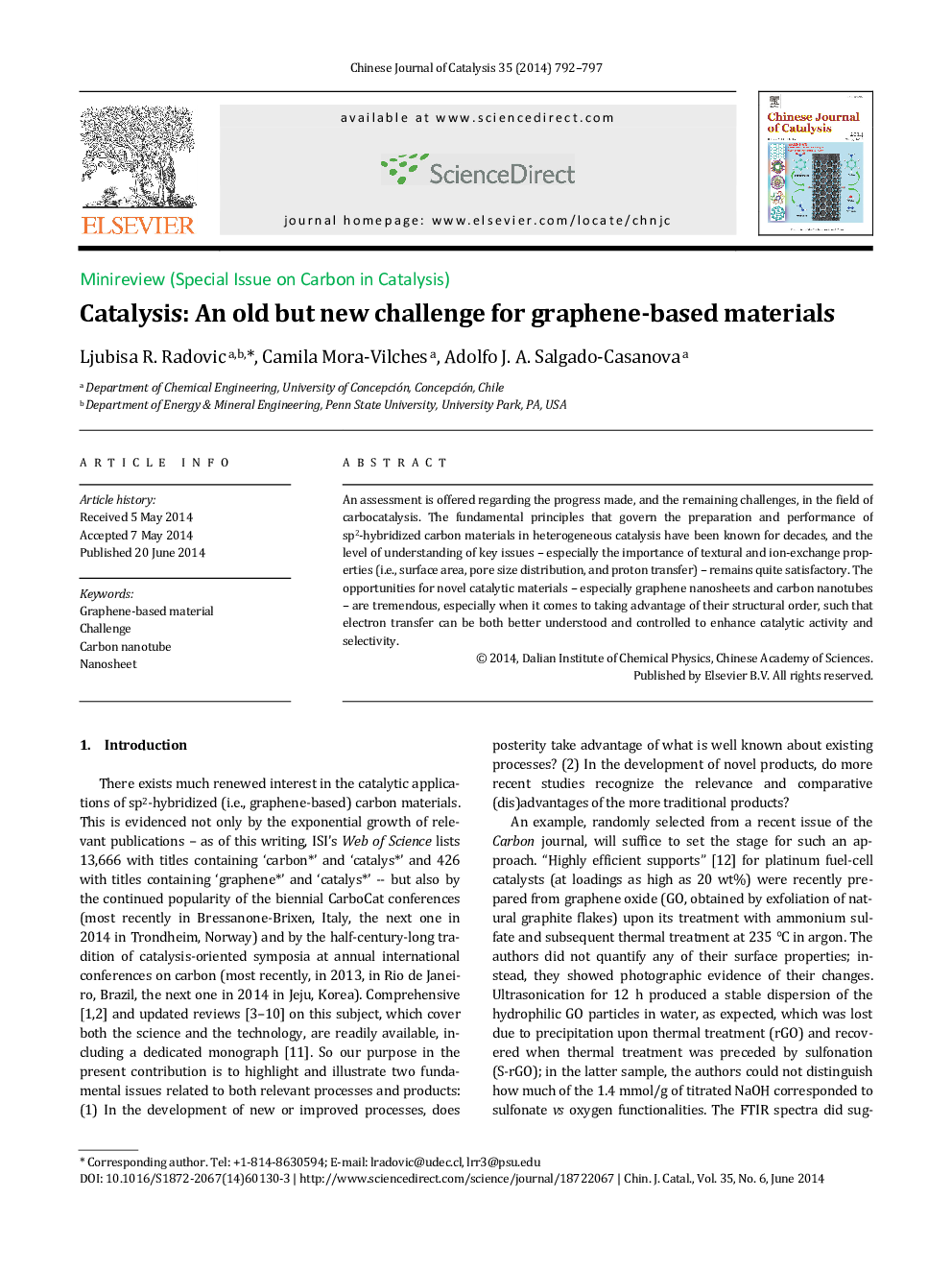| Article ID | Journal | Published Year | Pages | File Type |
|---|---|---|---|---|
| 59706 | Chinese Journal of Catalysis | 2014 | 6 Pages |
An assessment is offered regarding the progress made, and the remaining challenges, in the field of carbocatalysis. The fundamental principles that govern the preparation and performance of sp2-hybridized carbon materials in heterogeneous catalysis have been known for decades, and the level of understanding of key issues – especially the importance of textural and ion-exchange properties (i.e., surface area, pore size distribution, and proton transfer) – remains quite satisfactory. The opportunities for novel catalytic materials – especially graphene nanosheets and carbon nanotubes – are tremendous, especially when it comes to taking advantage of their structural order, such that electron transfer can be both better understood and controlled to enhance catalytic activity and selectivity.
Graphical AbstractOpportunities for novel catalytic materials especially graphene nanosheets and carbon nanotubes are tremendous: electron transfer processes, such as the one illustrated, can be both better understood and controlled to enhance catalytic activity and selectivity.Figure optionsDownload full-size imageDownload as PowerPoint slide
